Saturday Shoutout / Fish It Well
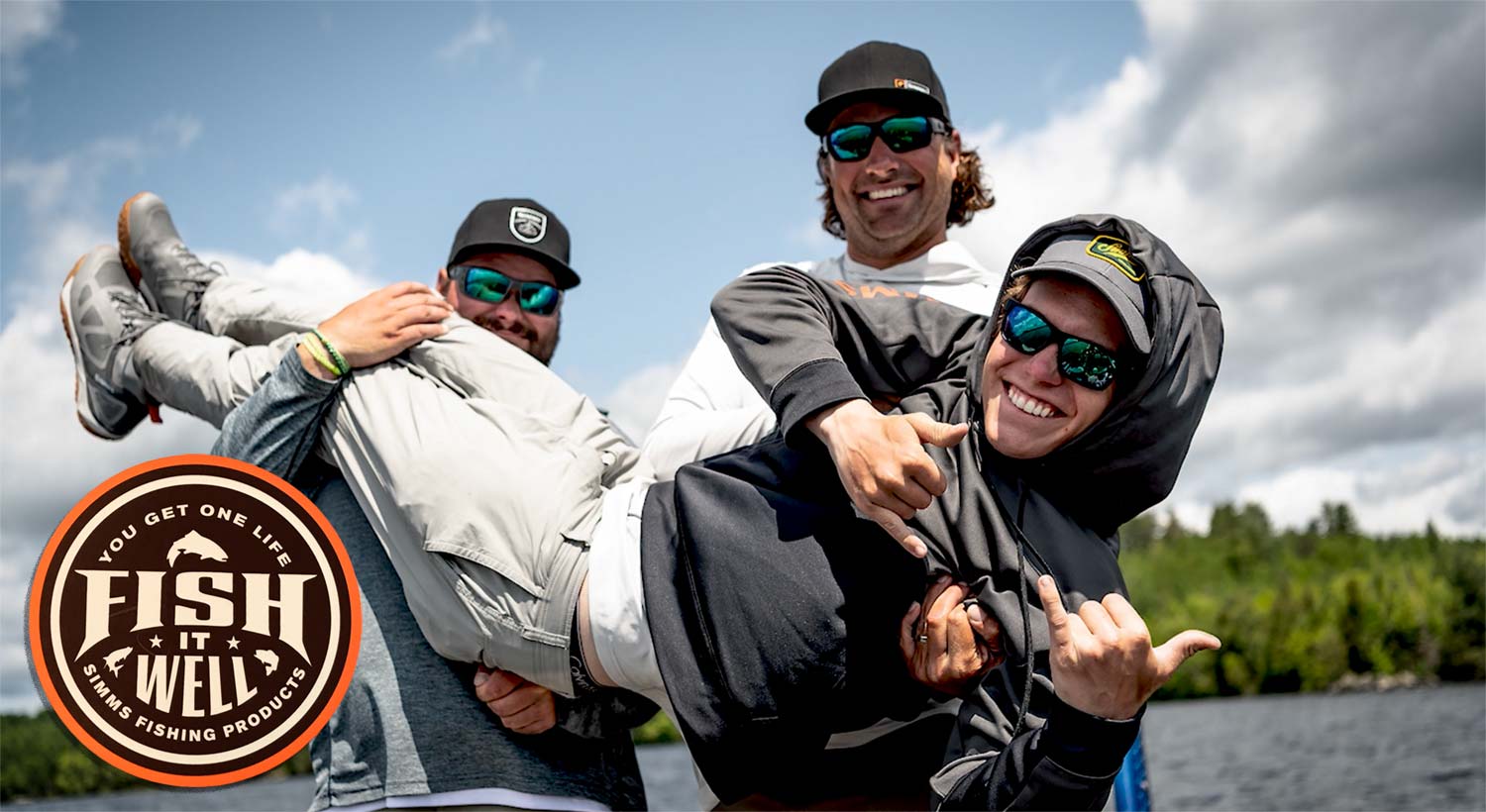
By Justin Pickett
We are all responsible for the memories we make.
We are the cast, the director, and the costume designer in an ongoing film where we write our own individualized scripts and ad lib as the cameras of life roll on. There are some things we don’t have control over. There will be instances of triumph, and, inevitably, there will be times of pain. Jobs. Love. Failures. Money…. All things that come and go. Well, except for that money thing…. It just seems to go. Life is a crazy ride full of ups and downs, but for an angler, like you and like myself, one thing will always remain constant. Fishing.
We only get one go at life, and our friends at Simms have come up with a great way to remind us that we need to enjoy our time here while we have it. And, for fly freaks like you and I, that means cramming in as much time on the water as possible! So to all you fly freaks out there….
YOU GET ONE LIFE, FISH IT WELL! CHECK OUT THE VIDEO.
Read More »Louis’s Saltwater Casting Drill
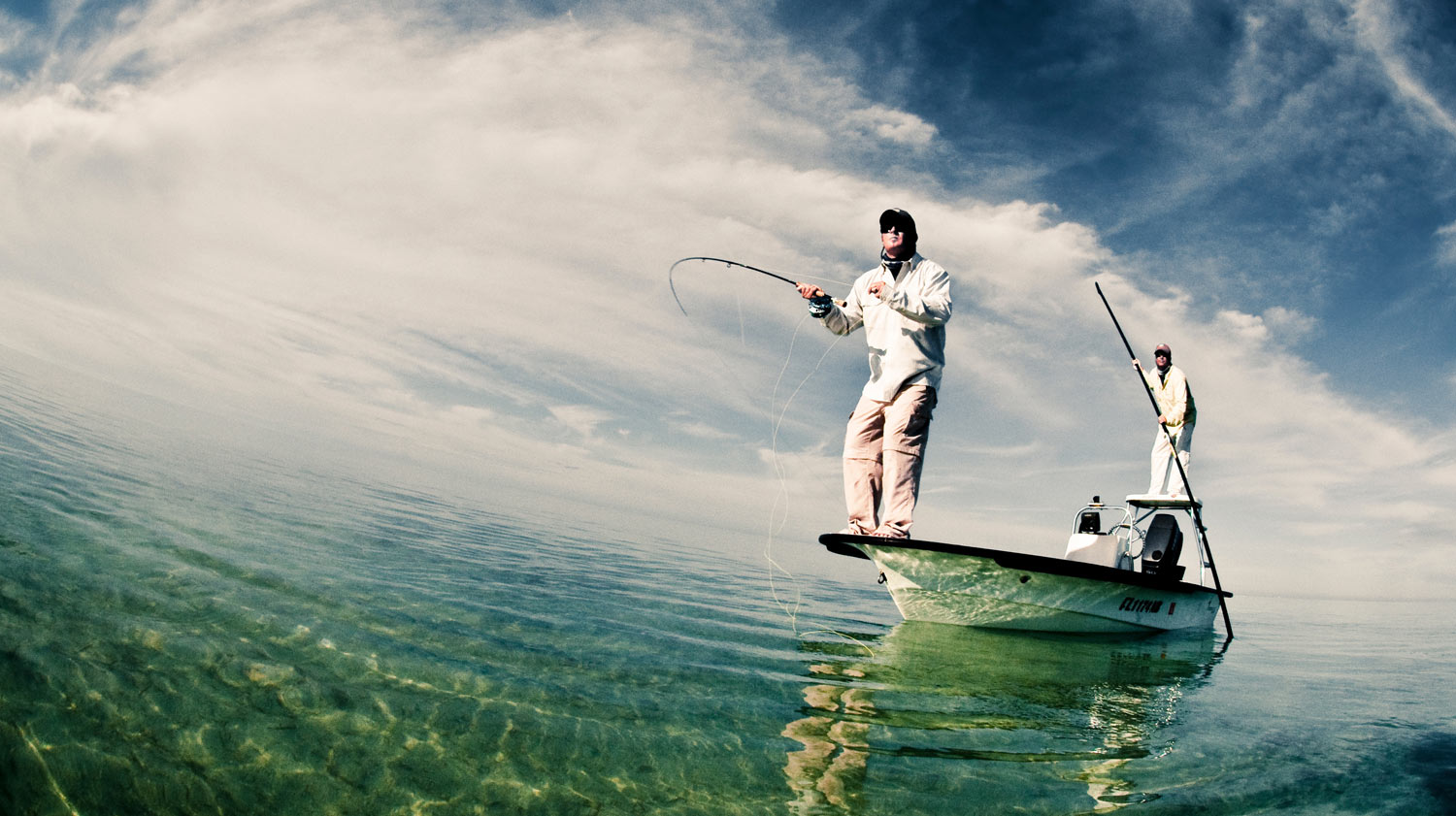
There’s no debate, practicing your casting makes you a more effective angler.
But all practice is not created equal. Simply heading down to the park and hucking as much line as possible doesn’t accomplish much. A while back we published a practice routine recommended by Tim Rajeff. If you haven’t seen that video, you should check it out. Any angler can benefit from Tim’s practice plan.
Today I’m going to add my own casting drill. This is a saltwater specific drill that works on a couple of techniques commonly used in saltwater fly fishing. It simulates making three presentations to a moving fish and it requires several tasks at once.
I lay out 3 hula-hoops in a line. The first at 40 feet, the next at 60 feet and the last at 80 feet. If you can’t cast 80 feet just shorten the gaps and work with the cast you have. I then step to the side so the three rings appear as a diagonal line. Starting in my ready position, I cast to the first ring, then pick up the line and cast to the second ring, and then the third. I do all of this with no false casting.
Don’t stress out about hitting the center of the rings. Your accuracy will improve with practice. Work on making the presentations efficiently without false casting, by shooting your line to the target. Pick the line up slow and smooth so your fly will not make noise and spook the fish. Work on making the three casts as quickly and accurately as possible.
I like this drill because it teaches several techniques in a realistic fishing scenario. If you can hit those three targets quietly in 10 seconds or less you’re going to do well on the water. It’s easier than it sounds. Just stay focused and keep practicing.
For the gear-heads, I’m casting the new
Read More »The Green River Below Flaming Gorge Is Where They Coined The Word Epic
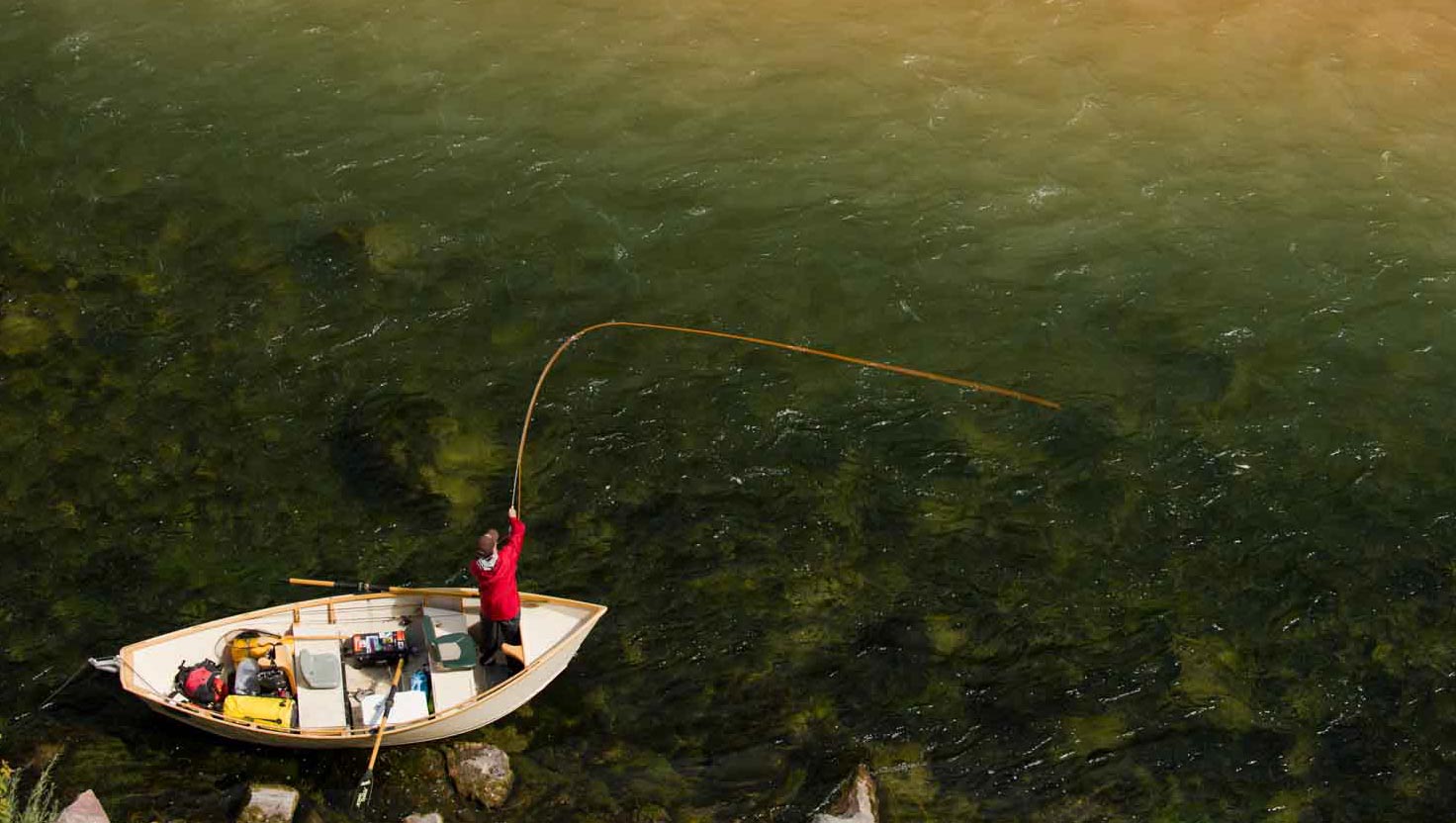
If you have never fished the Green River below Flaming Gorge, its time to check it out.
Located in the northeast corner of Utah, the Green River is one of the premier tailwaters in the country. The river flows through a beautiful red rock canyon with towering cliffs suspended high above the water and with close to 13,000 fish per mile its hard to have a bad day. The Green is best appreciated from a boat, but wade fisherman can also equally enjoy the river from the shore. There are three main sections of this tailwater. The A, B and C sections are separated by mere miles, but can fish very different depending on the time of year and Ill go through each section independently.
THE A SECTION.
At 7 miles in length this is a true tailwater, with consistent flows and gin clear cold water, bug life is a little limited in its diversity but the fish are always active. Midges, Baetis and Caddis are the primary insects but due to the arid climate, there are always a plethora of terrestrials in the summer. The Baetis hatches in the spring is both world famous and frustrating at the same time.
The river can be blanketed with bugs and it looks like its boiling with all the fish on the surface, but the fish are ultra picky. Going smaller with your tippet is always a good bet and switching from a dun to a cripple can sometimes be the ticket. About the second to third week of May we start seeing Cicadas. In my opinion, this is the best fishing in the country. 50 fish days can be the norm and 100 fish days happen from time to time. This is dry fly fishing at its pinnacle. Big bugs and big angry fish smack these monster terrestrials with a recklessness that will make your heart race. Having said that, cold weather and rain will put them down so look for multiple day of hot, sunny weather.
your planning on floating this section on your own, there are a few things to keep in mind. There is not a lot of whitewater, but there are two rapids in particular
Fighting Big Fish on Tenkara Rods
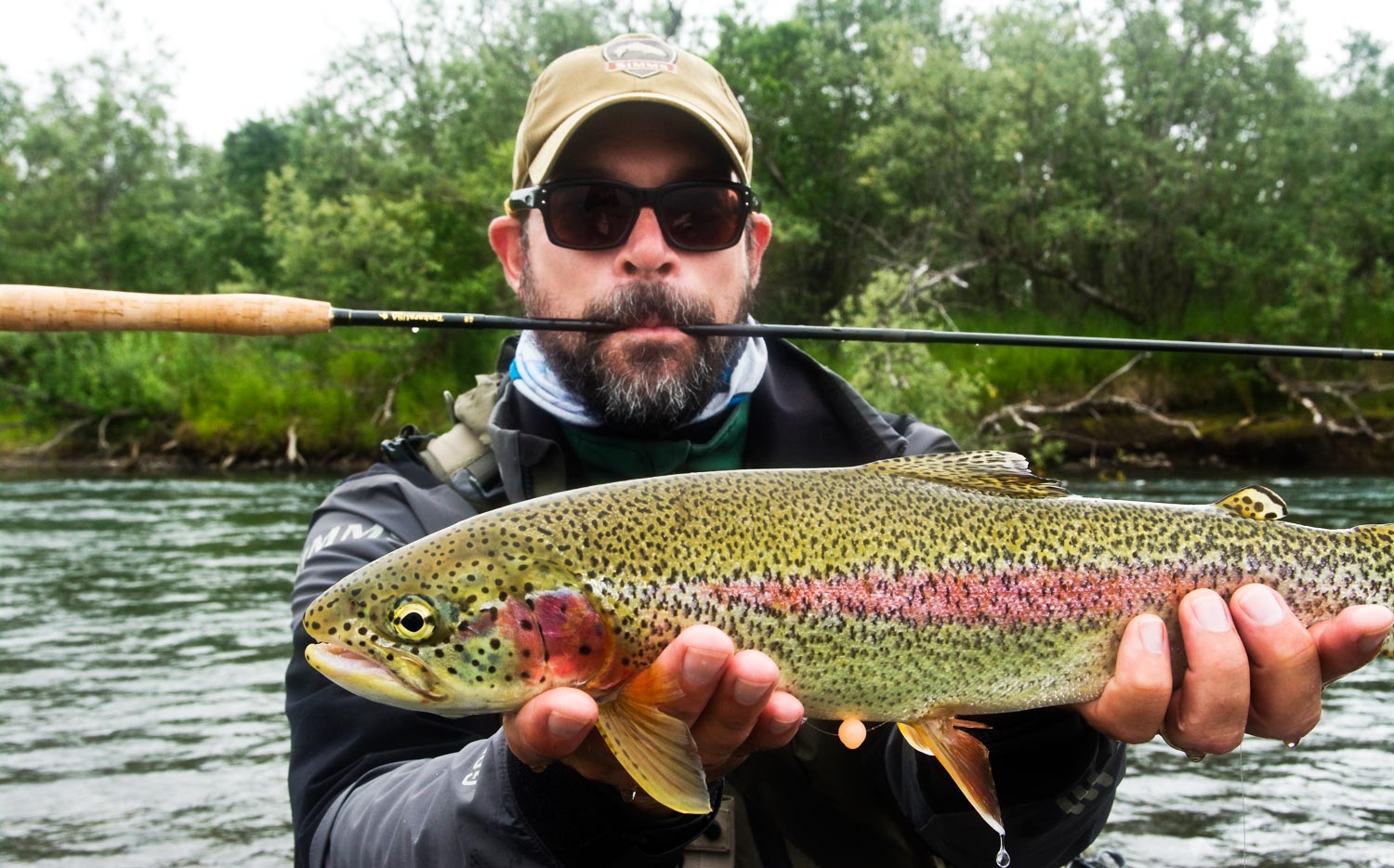
When I got my first tenkara, I couldn’t wait to break it.
The prevailing idea seemed, and still seams to be, that tenkara rods are for catching small fish. I took that as a challenge. I met Daniel Galhardo of Tenkara USA for a beer and told him I was going to Alaska to chase big rainbows and I wanted to take a tenkara rod.
“What kind of rod are you thinking?” He asked me.
“The smallest one you make.”
That’s how my Rhodo and I ended up going to Alaska. My buddy Aleks took a tenkara rod, too. A Sato, and we discovered that, not only can you catch big fish on tenkara rods, but it’s a hell of a lot of fun. By the second day everyone in camp was asking to try the rods, guides included.
I’m no tenkara master, but I’ve fought my share of big fish. Nothing I’m about to tell you is wisdom passed down through the generations. It’s mostly stuff I figured out myself in the heat of the moment. Some of it’s just good fish fighting with any rod but some of it is very, very different. I’ll tell you this. With what I’ve learned in last year I no longer think about breaking that little rod.
I should say from the very start that hooking your first 20-inch Alaska rainbow on a tenkara rod is an “Oh-shit moment” on par with hooking your first tarpon. That first big fish is worth the price of the rod. Just to experience the feeling of instinctively reaching for your reel and finding it AWOL. If you are not the kind of person who adapts well to change, this is a good time to learn!
Tactics for fighting big fish on tenkara rods
Read More »Sunday Classic / Landlocked Stripers on the Fly
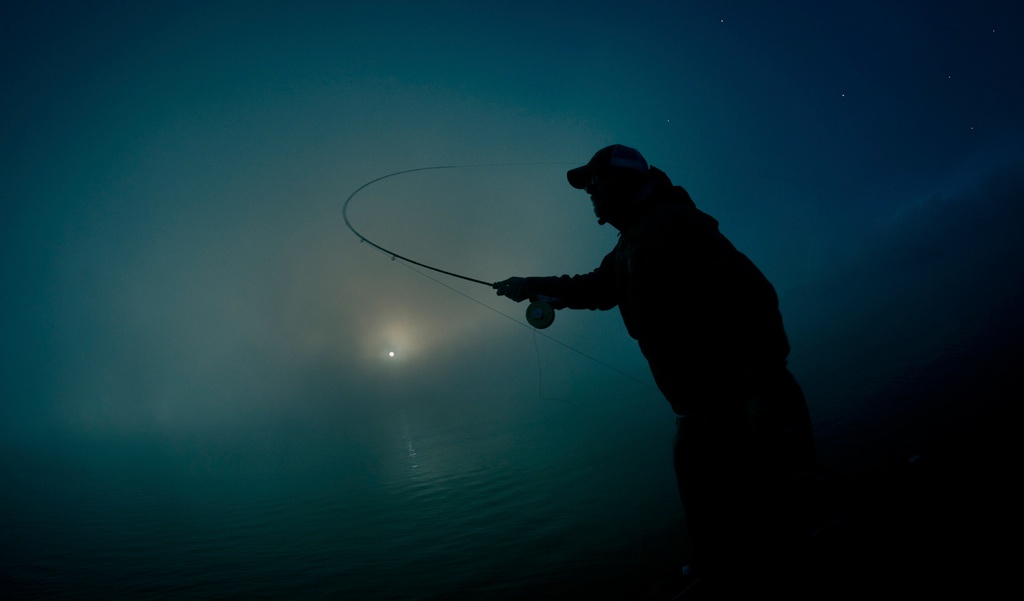
IT’S THAT TIME OF YEAR AGAIN!
Time for me to get excited about layering up and getting on one of my local reservoirs for some landlocked stripers on the fly. The fall and winter months are great times for both numbers and big fish if you’re willing to battle the cold. Dropping water temperatures get baitfish schooling up and very active, and you’ll find schools of hybrid bass and striped bass following their every move. It sounds easy right? Tell me that again when the alarm clock is ringing at 4:00am and it’s twenty degrees outside.
For best results you’re going to want to get on the lake early, well before sunrise. You will find your best opportunity for breaking fish is the first three or four hours of the day. Once the sun gets high on the horizon the baitfish and the striped bass usually go deep. Even with full sinking lines you’ll find it hard to effectively present your fly in the strike zone when fish are deep. Long points close to deep water or flats and humps surrounded by deep water are hotspots for stripers and hybrid bass driving and abusing baitfish. Sometimes stripers will
Read More »Saturday Shoutout / Hook Shots Esox
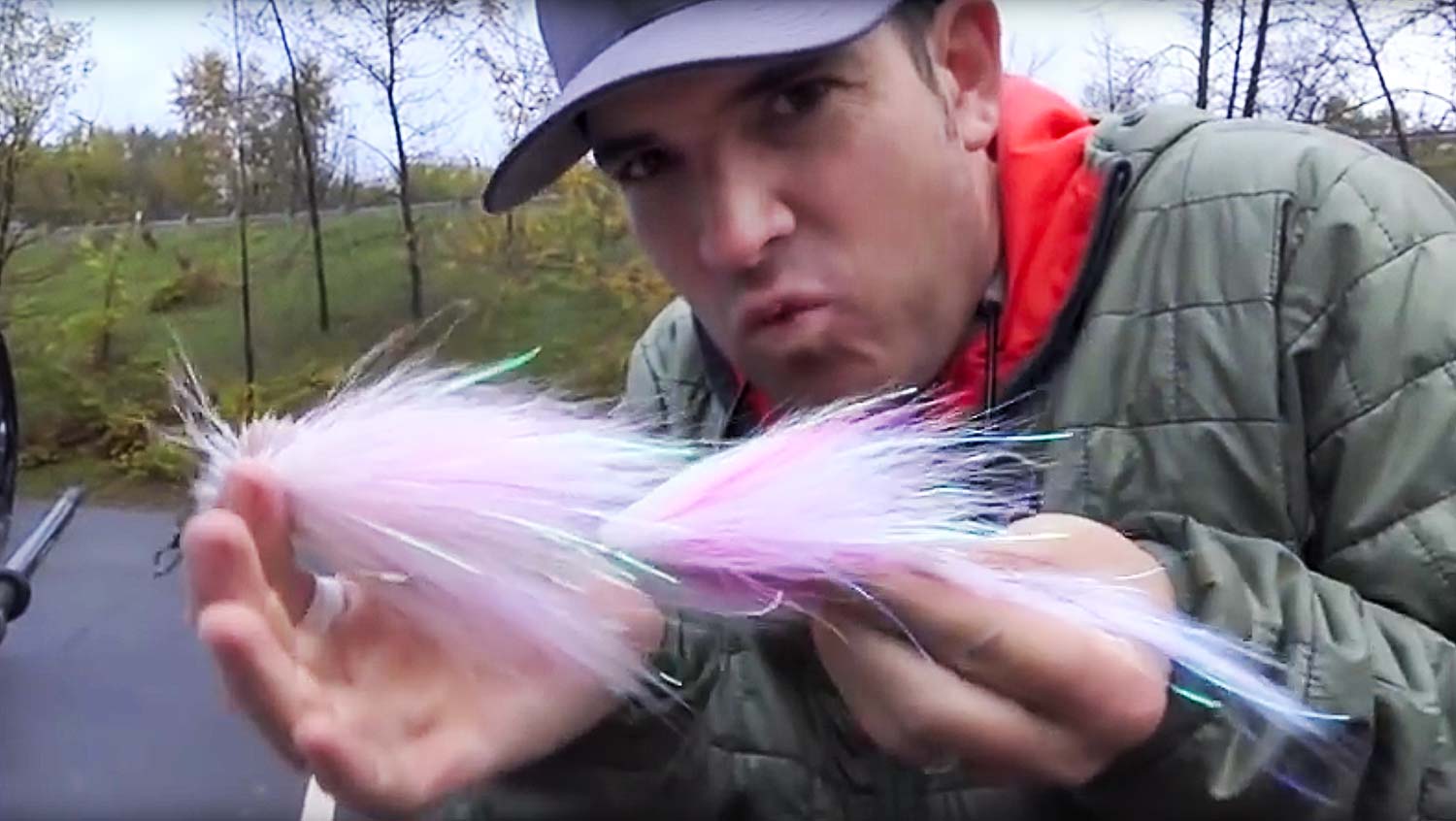
Time to chase some musky, pike and chain pickerel.
I was just telling a friend what a cool guy Joe Cermele is and, wouldn’t you know, he pops up on my YouTube feed. That’s just too much coincidence to ignore. I had to share some Hook Shots Videos.
If you don’t know the Hook Shots series from Field and Stream, you’re in for a treat. Joe and Eric, and their many guests, do a great job of producing fun and authentic fishing videos for both fly and gear anglers. I especially enjoy their esox videos. Musky, pike and the much maligned chain pickerel. Nobody does it better.
HERE ARE A FEW EXTRA TOOTHY HOOK SHOTS!
Read More »Better Bow and Arrow Cast: Video
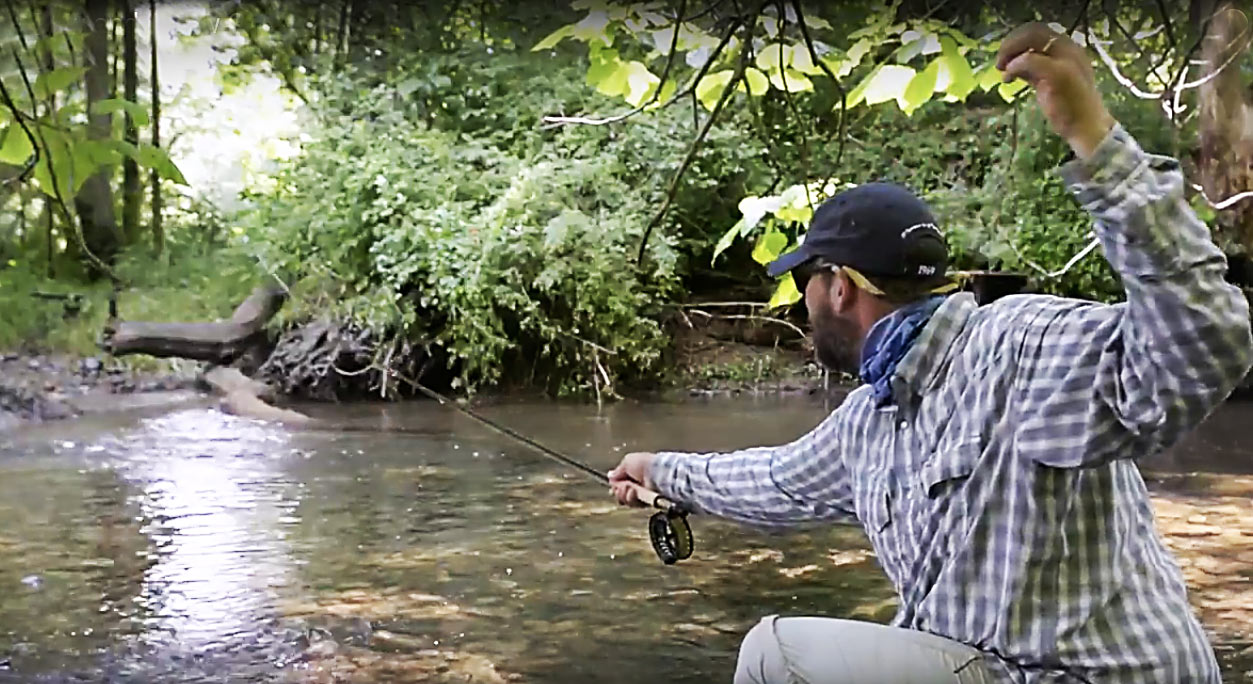
By Louis Cahill
Here’s a trick you may not know for making longer Bow-and-Arrow casts.
If you love fishing small streams, then you probably know how to make a Bow-and-Arrow cast. It’s not rocket science. But, what if I told you I could show you how to get an extra 6-9 feet with that simple cast?
I couldn’t count the number of brook trout I’ve caught this way ing the mountains of North Georgia and North Carolina. If you don’t know how to make the Bow-and-Arrow cast, or if you’re interested in reaching more water,
check out this video.
Read More »So You Want To Be An Alaska Guide?
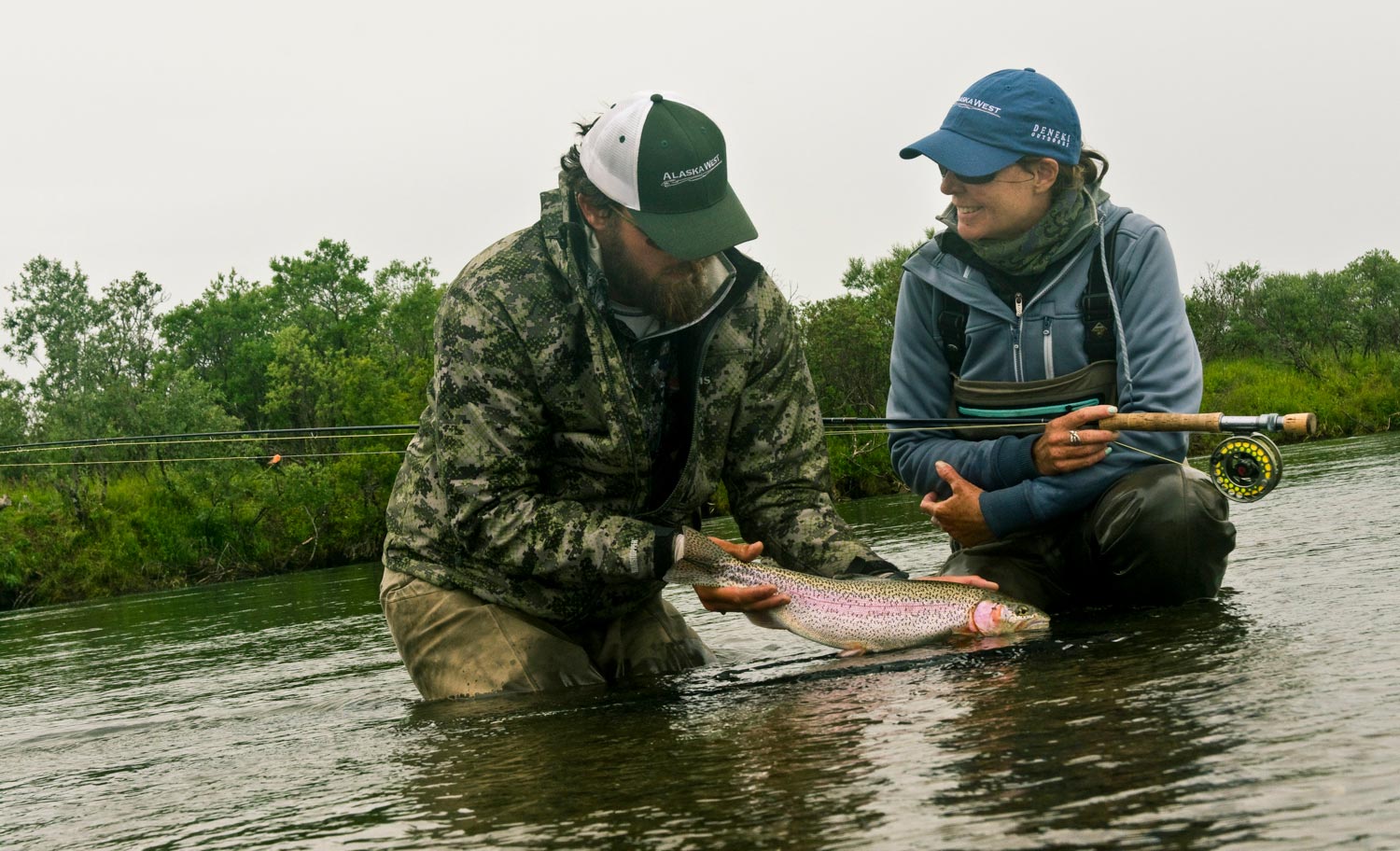
By Whitney Gould
The plane, which brought me to Western Alaska is gone.
I’m standing on a remote, empty tarmac. The sky is a herring-gull gray, the air crisp and clean. I am surrounded by tundra. The only visible object is a square box painted white, the airport. People come, pick up passengers and supplies, and disappear as suddenly as they arrived. This is my dream job. I’m an Alaskan guide and I am losing any shred of confidence.
Weeks prior, I had emailed Ed the head guide, asking him what skills I would need to get through the season.
“It’s long hours day after day,” he wrote. “It can become grueling, I won’t lie about that, but it also offers many opportunities for the ‘best of times’… The main thing we look for up there is dependability, a stable personality, and the ability to get along with others while working in a confined social environment for a long period of time.”
Standing there, I thought, maybe I have two of these qualities, but if no one comes to get me, I now have paper to start a fire. Eventually I am picked up.
Nothing in Alaska is wasted. Trips to the airport or town are condensed, combined with supply runs and trips, to the post office and dump. This day is no different. Tyler, the camp hand, drives us eight miles up river to deliver me and supplies to camp. My arrival is no different than that of the guide I am replacing, or the guides who will replace me in five years.
Rick, the camp manager, greets me. After introducing himself, he gives me a tour and tells me to be ready after lunch to gravel the walkways.
Graveling is no easy task. It’s tedious and exhausting. Early season brings high water, so the trick is to find an exposed gravel bar. You take the boat to a bar
Read More »Three-dudes walk into a parking lot
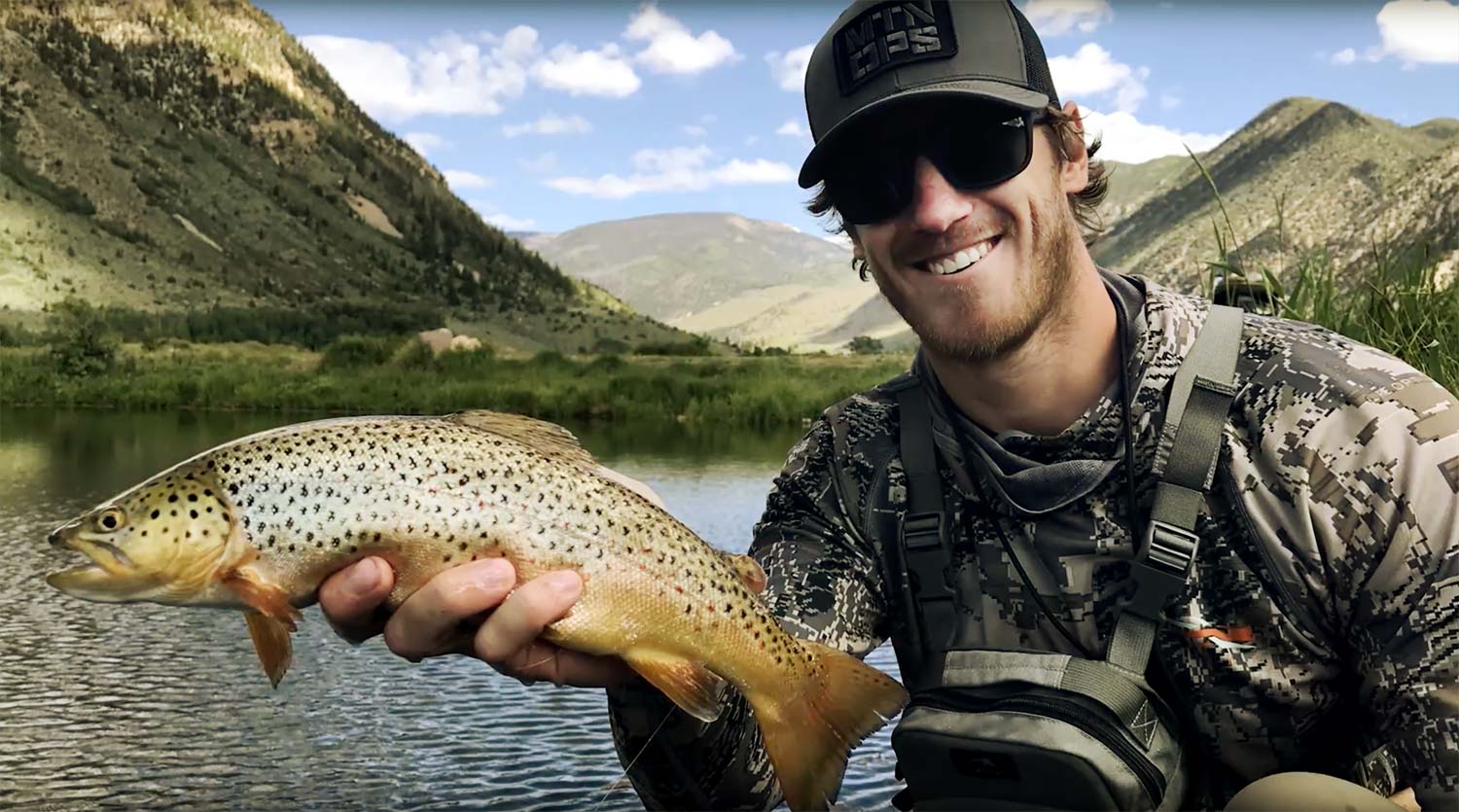
By: Alice Tesar
Louis Cahill, Editor and Chief Fly Fisher of Gink and Gasoline, recently published an article Tom Rosenbauer’s 8 Tips To Becoming a Better Fly Fisher and tip #5 is an invaluable lesson: “Don’t be an asshole on the water.” You see, I’ve met plenty of assholes on the water, and while I typically chose to remain silent, the few times I have committed a minor retaliation against said assholes, it has ruined my day. Heading back to camp or the car with the taste of yesterday’s beer and hate on my tongue is a bummer. No matter the fish I caught in that high hole, encountering a jerk and being rude back to them makes fishing less fun. After all, most of us aren’t catching dinner we’re just on the water to create space for joy in our lives.
I was riding the YouTube train recently and came across the most genuine fly-fishing video I’ve seen in a long time. No long list of sponsors or fruity drone footage, it was a low budget, home-edit. Three young guys, maybe in their early 30s, who met up at “Wally World” ( aka Wal-Mart), to drive a few hours to two undisclosed tiny ponds rumored to be filled with trout. Based on their clothing, rigs, and chatter they were experienced anglers with heads on their shoulders (or at least on their shoulders enough to still want to fish with tiny flies and uber flexy rods). They used their phone cameras and maybe a Go Pro or two to document that afternoon on the water. They proceeded to catch a handful of maybe 12- to 16-inch bows and browns both from the banks and from a small pack-raft. Regardless of the massive tarpon or belly bulging PNW zombies they’d likely caught on other days this year; these three bros were having the time of their lives with each dinky little catch. Maybe it was the truth behind the rumor that led them to these lakes or purely catching all day that made them so giddy, but their hoots and hollers, their laughter, and ridiculous retelling of their catches have stuck with me.
Too often I see other anglers within the dark magic of angling, “going to catch a big one” and acting like complete assholes to other anglers along the way.
Read More »Sunday Classic / The Magic Stonefly
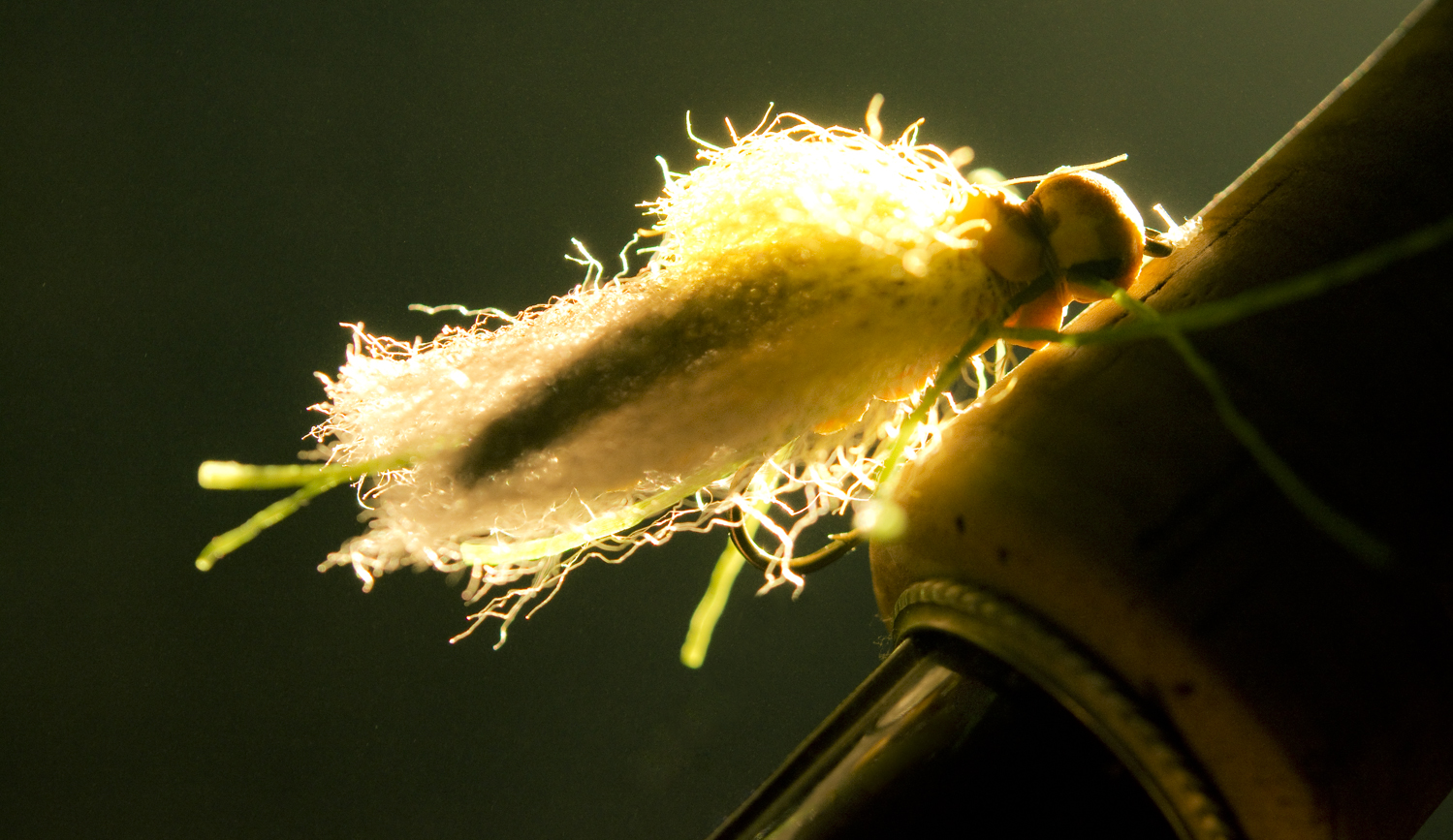
ON OF THE BEST LESSONS I HAVE LEARNED FROM FISHING WITH KENT IS THIS. IF THERE IS A SECRET TO ANGLING SUCCESS, IT’S CONFIDENCE.
A few years back I was on a photo shoot in Wyoming when the client wanted to stage a shot of an angler looking through a fly box. The box we had on hand was my own, but my fly selection was greatly depleted, as it almost always is by mid summer when I’m too busy shooting to tie. My good friend Rob Parkins was helping me out on the shoot and offered to fill out my box with some of his flies. After the shoot when I offered the box back so he could reclaim his flies, he told me to keep them.
I was stoked! Rob is one of the best fly tiers I know and I was stoked to have half a box of his flies. I was planning a couple of days of fishing at the end of the job and I knew these flies would insure that it was productive. I was right.
Among the flies were some very cool stonefly patterns. Several I had not seen before. One in particular caught my eye. A golden stone dry fly with sexy legs and a cool wing made up of layers of flash and different colored yarn. I held it up to the light and the wing had a lifelike glow that I knew would drive fish crazy. I remember thinking how clever Rob had been to think of it.
I wrecked fish with that fly while I was in Wyoming. When I got home I couldn’t wait to give it a try. I wasn’t surprised to find that it was just as effective in the east as it was in the west. It was just one of those fishy flies that works anywhere. When I got to the river I would tie it on and I knew it would produce.
I fished that fly with confidence because I trusted the guy who tied it. I knew that any fly Rob had tied was going to be a guaranteed producer and all I had to do was put in on the seam and hang on. I caught a lot of fish on that fly everywhere I fished it. Eventually I stashed it away. I was afraid I’d lose it and not be able to tie another.
I called Rob up and told him about the success I was having with the fly and asked him if he would share the recipe with me so I could tie up some more. He was happy to help but when I described the fly he wasn’t sure which fly I was talking about.
“Take a picture with your phone and send it to me,” he told me. So I did. This is the response I got.
Read More »